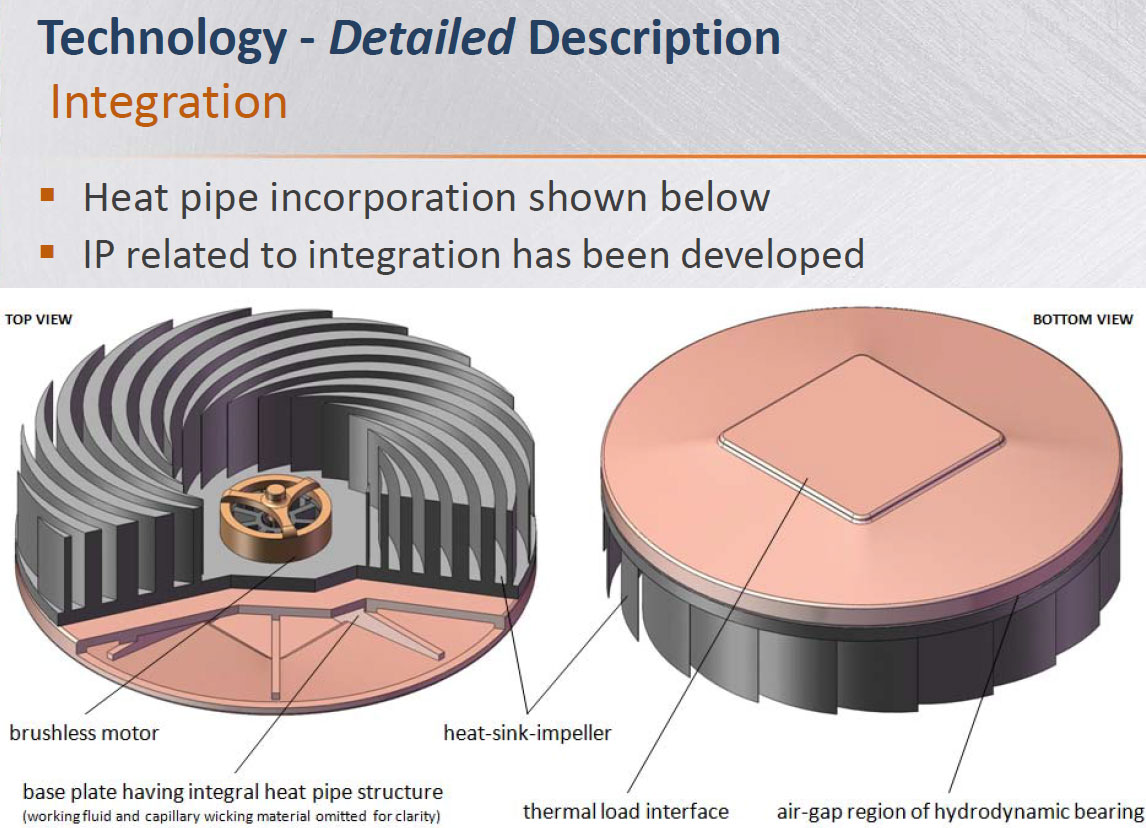Sandia Develops Amazingly Efficient CPU Cooler
Researchers at Sandia National Laboratories claim to have developed, by today's standards, an insanely efficient CPU cooler fan.
The "Sandia Cooler" features curved fins and achieves 30x improvement in heat transfer over a commercial Dynatron G950 cooler that served as comparison.
The cooling performance of both devices was 0.2 degrees Celsius per Watt, but the Sandia cooler has a surface area of just 400 cm2, while the Dynatron cooler uses a whopping 12,000 cm2 due to a massive heat sink, which the Sandia Cooler does not have. The volume of the prototype cooler is about 170 cm3, compared to 2,200 cm3 of the traditional Dynatron structure.
According to the researchers, their cooler solves three key problems of CPU coolers today. The claim a several-fold reduction in boundary layer thickness, intrinsic immunity to heat sink fouling, and a "drastic reduction" in noise. What makes this solution even more interesting is that it does not use exotic materials and can be manufactured for about $10 per unit. However, the reserachers say that mass-produced coolers may be less efficient than their prototype and achieved only about a quarter of the cooling performance and about 0.05 degrees Celsius per watt, which is still more than seven times more efficient than the Dynatron solution.
There was no information on commercial availability, but the researchers said that multiple patents have been filed and that their product is currently in "alpha" status.
Get Tom's Hardware's best news and in-depth reviews, straight to your inbox.

Douglas Perry was a freelance writer for Tom's Hardware covering semiconductors, storage technology, quantum computing, and processor power delivery. He has authored several books and is currently an editor for The Oregonian/OregonLive.
-
eddieroolz That looks barely larger than a hockey puck. If it can deliver such impressive cooling in reality, then it will be revolutionary for the PC cooling industry.Reply -
southernshark Well I don't know if it will be revolutionary, but it will certainly be evolutionary. Hopefully this will assist in the needed "downsizing" of PCs.Reply -
bennaye but how does the commercial dynatron cooler compare to today's most popular coolers such as the hyper evo and noctua lineup in general?Reply -
geraldfryjr I read about this quite some time ago.Reply
It will be interesting once they come out on the market with consumer product.
It is a neat design though.
jer :) -
A Bad Day How long is it going to take for a company to manufacture a supersized, such as quad-fan?Reply -
Shin-san Hopefully it wouldn't be too bad to clean outReply
southernsharkWell I don't know if it will be revolutionary, but it will certainly be evolutionary. Hopefully this will assist in the needed "downsizing" of PCs.Especially video cards. Those things have been getting too large. Didn't someone make a card that took up 3 slot?
